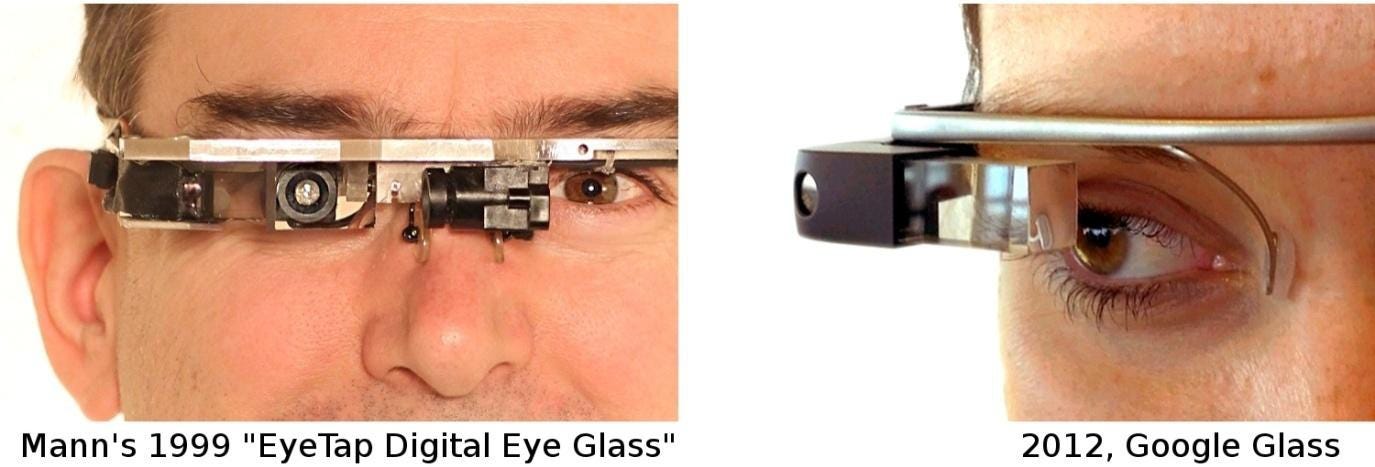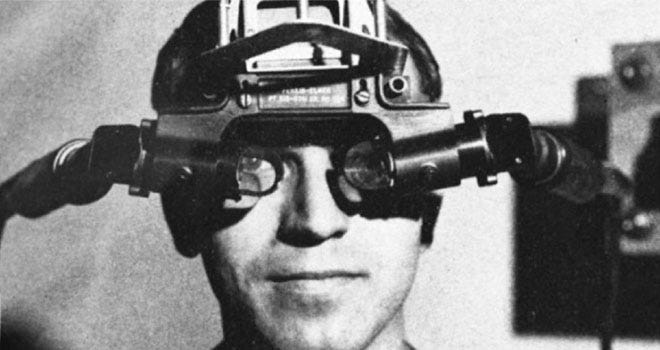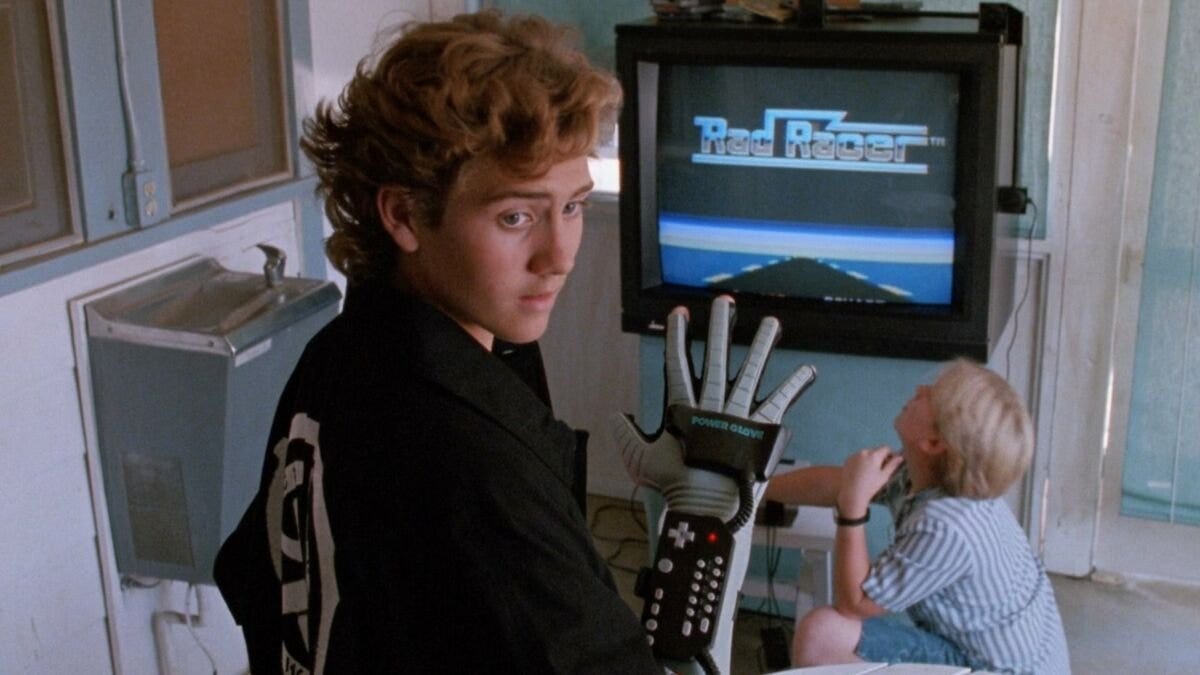Years ago, I remember hopping online to play the original RuneScape. It was around Christmas time in 2009 and the game had launched a special Christmas event known as A Winter Warble. It was a fun little gimmick and clearly it’s one that stuck with me over the years, even though I was never a big RuneScape guy. I bring it up, because for some reason the name of the event has always resonated. A Winter Warble; but what is a warble? Well, a warble can be one of two things.
A musical term; to sing with trills, runs, and other embellishments.
A farming term; an abscessed, boil-like, swelling on the back of cattle, deer, a certain other animals. They are caused by the larva of a warble fly.
Cool, you’ve learned a new word, but why are we talking about singing techniques and larva boils? Well, because we’re going to talk about wearable tech, obviously; and I am of the opinion that wearable tech can easily and appropriately be explained using both of them — a nice embellishment and/or an invasive growth protruding from our skin.
What are wearables?
The term “wearables”, to me, encompasses a fairly limited range of gadgets. It’s really just things like smartwatches, VR/AR/mixed reality glasses and headsets, though smart tattoos and so-called “smart clothing” are also in this category. Now, when I hear “smart clothing”, this is what I think of…
However, this is what it really is.
Of course, there are other applications in development such as MIT’s AlterEgo — a wearable “mind reading” computer that translates the wearers brain waves into web searches that then transmits the results back into the mind.
Cool stuff, but not as cool as power laces and an automatically fitting/drying jacket. Truthfully, though, when we — as consumers — talk about wearable tech we mean consumer goods like watches and fitness trackers.
The rise of wearable tech
Augmented reality
Wearable devices have been a thing for decades. The earliest ones came about in the 1970s and were not exactly pretty. Steve Mann, an inventor and tenured professor at MIT (who also does work at the University of Toronto) introduced augmented reality to the world in 1978 with the EyeTap Digital Eye Glass pictured below.
Of course, the later revisions should look pretty familiar to anyone who followed Google’s shenanigans over the last decade…
Virtual reality
Alongside AR, is of course VR. Virtual reality got started back in the late ‘60s with the “Sword of Damocles” — an early head mounted display designed and build by Ivan Sutherland, Bob Sproull, Quintin Foster, and Danny Cohen.
Later in 1979 things like the VITAL helmet was developed by Macdonald-Douglas to integrate VR features into it’s flight helmets for the US military and a decade later NASA worked with Crystal River Engineering Inc. to create a VR training simulator for astronauts.
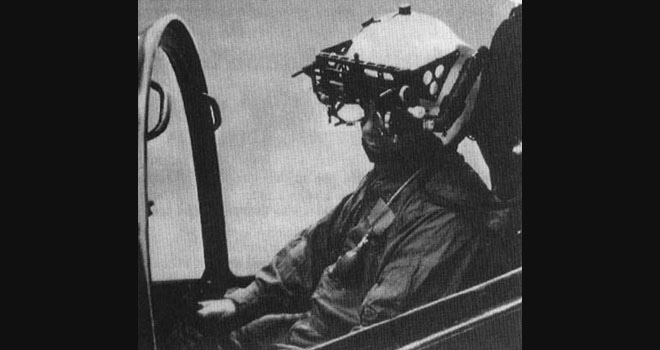

It was also around this time that consumers started to become the target for wearable tech and VR headsets. In 1989, Nintendo partnered with VPL Research to bring us the (now) iconic Power Glove.
Not to be outdone, Sega planned their own VR accessory for the Genesis/Mega Drive called the Sega VR and they even put giant VR motion simulators out into the world blending stereoscopic VR with motion for a real multi-dimensional experience.

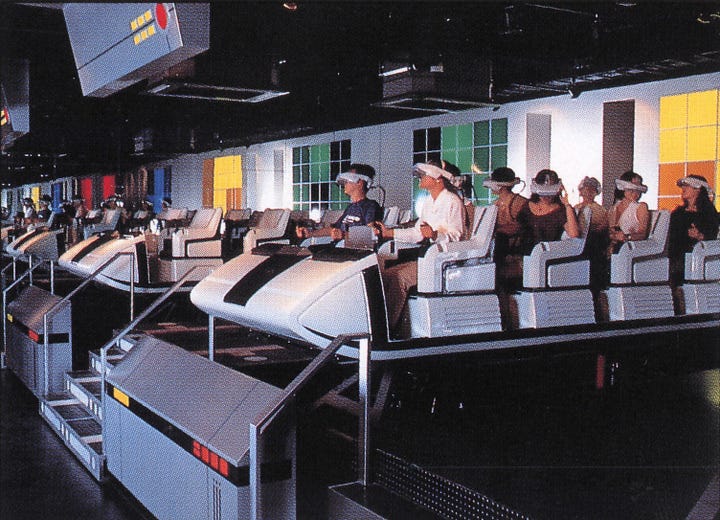
Around the time that Sega was exploring their VR options, The Virtuality Group introduced the world to Virtuality. The price to experience one of these things was high, but it was a fully immersive one. The pods they used either had you sit in a seat or stand in a ring and don a massive headset as you went through one of several games. One thing that made Virtuality unique was the ability to network these pods together to enable a multiplayer immersive VR game. Each model (the 1000CS, 1000SD, 2000SU, 2000SD, etc) came with their own line of games and the company even partnered with Sega (the Mega Visor Display, not the Sega VR mentioned above) and Atari to make headsets for the Genesis and the Jaguar respectively. They even partnered with Big Blue — IBM — on a headset in a project called Elysium for use in architectural work. The 1000CS — the standing ring model — was my first experinece with VR back in the mid-90s.


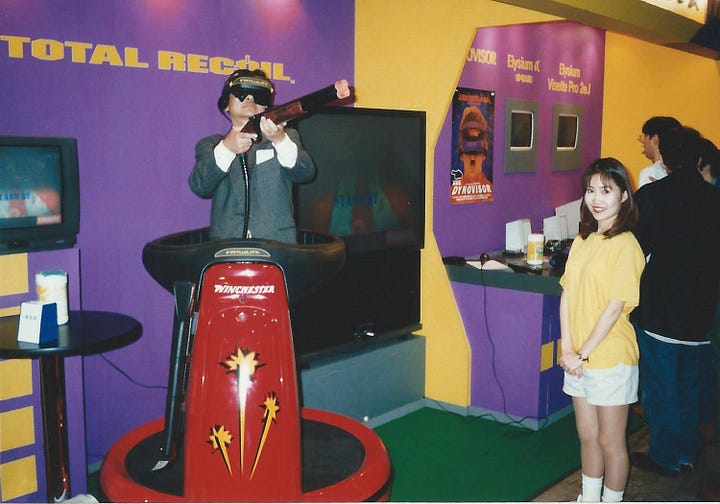
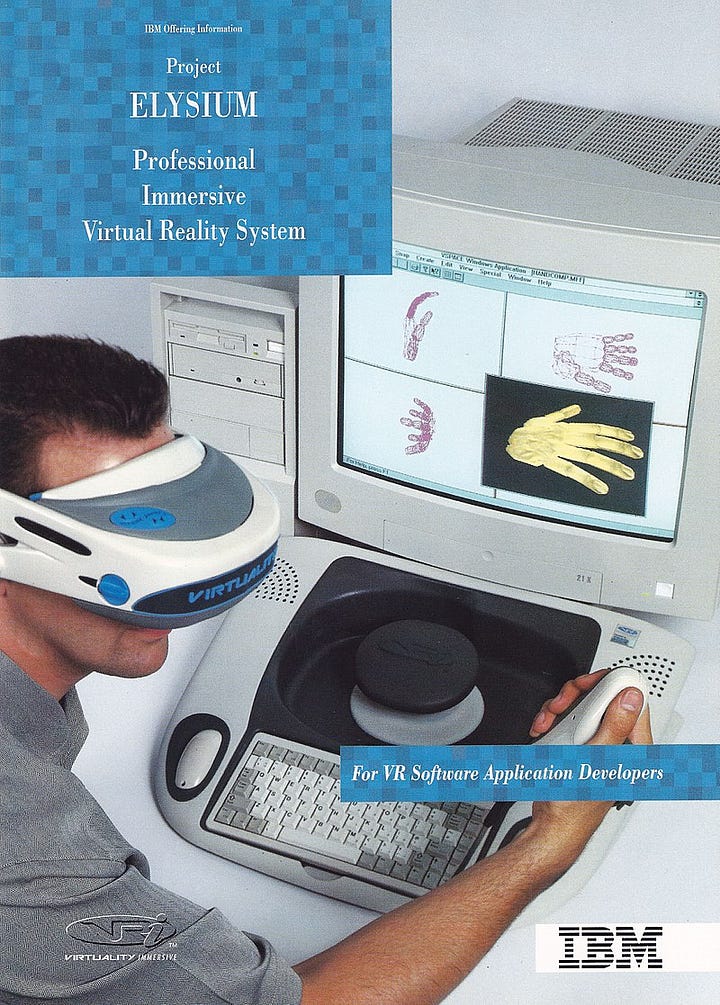
In 1995, Nintendo took another stab at the wearable market with the Virtual Boy. The Virtual Boy is a meme at this point, but as a kid who was in that key demographic when it came out, it was an amazing little console! My friend got one so I was able to play it a bit back when it came out and I’m going to come right out and say it — the Virtual Boy wasn’t as bad as everyone made it out to be. Sure, it’s only red and black, and the whole idea of firing red lasers into the eyes of children is probably problematic, but the games were generally fun. If memory serves, he had Mario Clash, Mario Tenis, and Wario Land. The gameplay was quite fluid, and it was a full 32-bit console that I would argue had better graphics than the original PlayStation; again, if only it had full color graphics. The thing was pretty uncomfortable to use though… I’ll give the critics that.

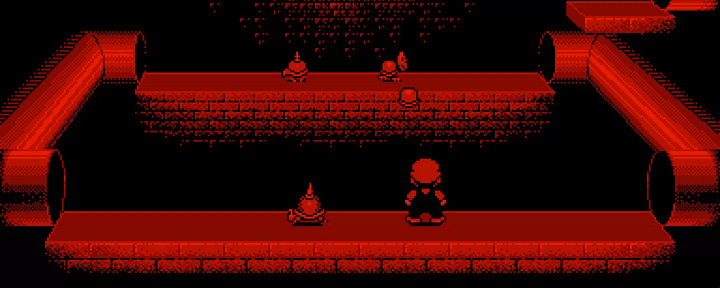
More VR headsets hit the market over the next few years, but ultimately the buzz died down as the decade drew to a close. We were just too ahead of our time. The next real leap in progress over VR wouldn’t come until the 2010s with the rise of things like the Oculus Quest and it’s kin.
Smartwatches, smart rings, AI pins, and the rest
The wearable scene didn’t truly take off until the last decade or so. It started with things like the Google Glass and the Fitbit, and progressed into smartwatches. Other bits of wearable tech include smart rings and now we’re even getting “AI pins” that are essentially supposed to replace your need to pull your phone out at all.





While I’m sure this is only the beginning of what we can expect in terms of wearables, it’s kind of hard to believe just how far the technology of these gadgets has come in such a short time.
Enjoy it, but don’t become dependent
This is the part of the article where I’m supposed to be telling you about all of the ways you can utilize older tech or open source alternatives to break free of your smart wearables habbit. However, if I’m being totally honest, there aren’t a lot of options from what I can see — with the exception of trying out something like the PineTime from Pine64

The other option is just don’t use these smart-things at all. Instead of your fitbit or Apple Watch, just wear a normal analog or digital one. Heck, you can even get one of those cool Casio watches with the calculator on them for pretty cheap! Instead of a smart ring, just wear a ring — or nothing at all. AR? VR? AI pins? There’s no real replacement for those things aside from just abstaining from using them — which is a viable approach in my book.
Really, my take on wearables is quite simple. They’re cool, so enjoy them. Just don’t become dependent on them. It' may also be helpful to set limits on their use. For instance, the only wearable tech I own is an Apple Watch Series 5 that I got for Christmas last year. It’s a cool gadget and there are some features I use quite a bit throughout the day. However, I set myself a no-smart-things-in-the-house rule. When I come home from work or wherever, the watch comes off and goes on my desk until I’m ready to charge it. Do I forget sometimes? Sure, but it’s a habit I am actively trying to cultivate.
The area I have failed in here is the phone. Like most people, it just lives in my pocket, but in this new year my wife and I are trying something different. We’re putting a basket in our kitchen and our phones — and the Android phone we use as a house phone — will live in there while we are home with the ringers turned up so that we don’t always have them within reach. This way we aren’t drawn to just pull it out and start messing around, or looking up something trivial. It also kind of immitates the old house phone experience where your phone rings so you have to make your way to the room where it’s located — traditionally, for my family growing up, it was usually the kitchen.
Like I said, wearable tech isn’t a bad thing, and can have some really cool uses, but for the sake of building our digital exit strategies they can be a hinderance if we build our workflows and lifestyles around them. Use them. Enjoy them. Just keep them in their proper place and be ready to jetison them if/when the time comes.






